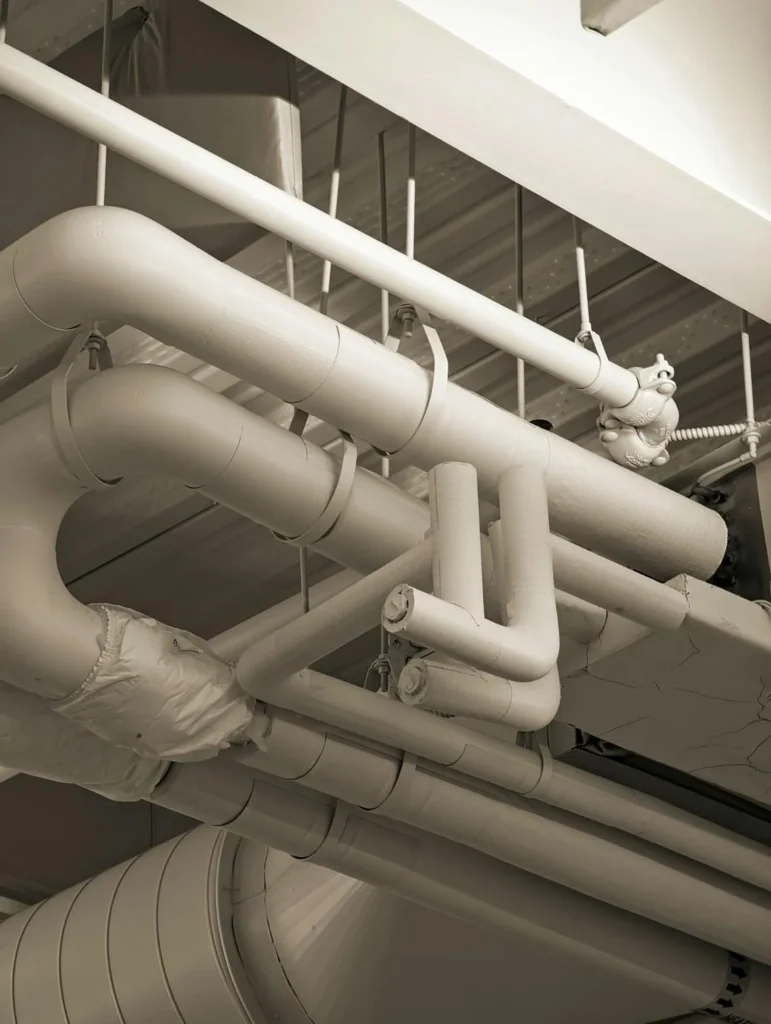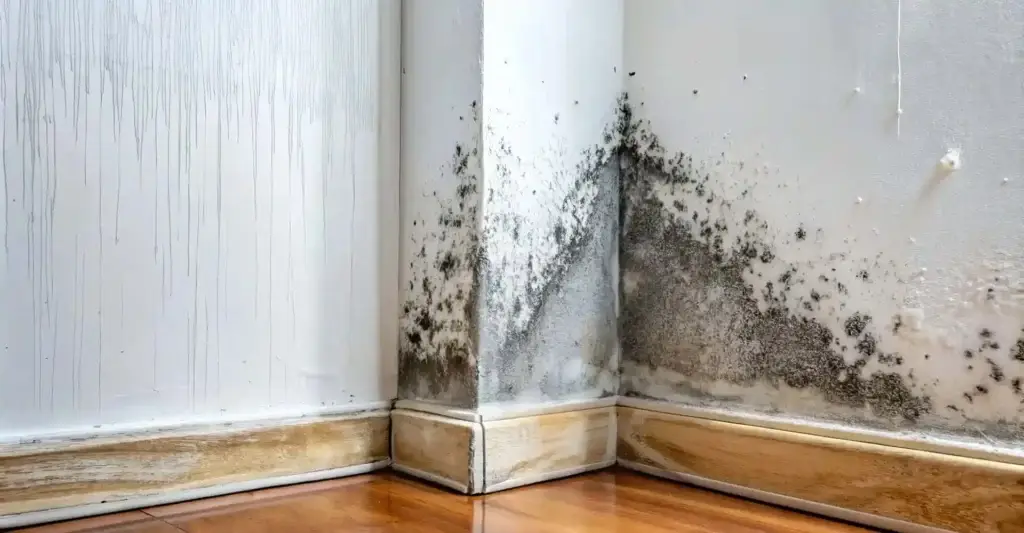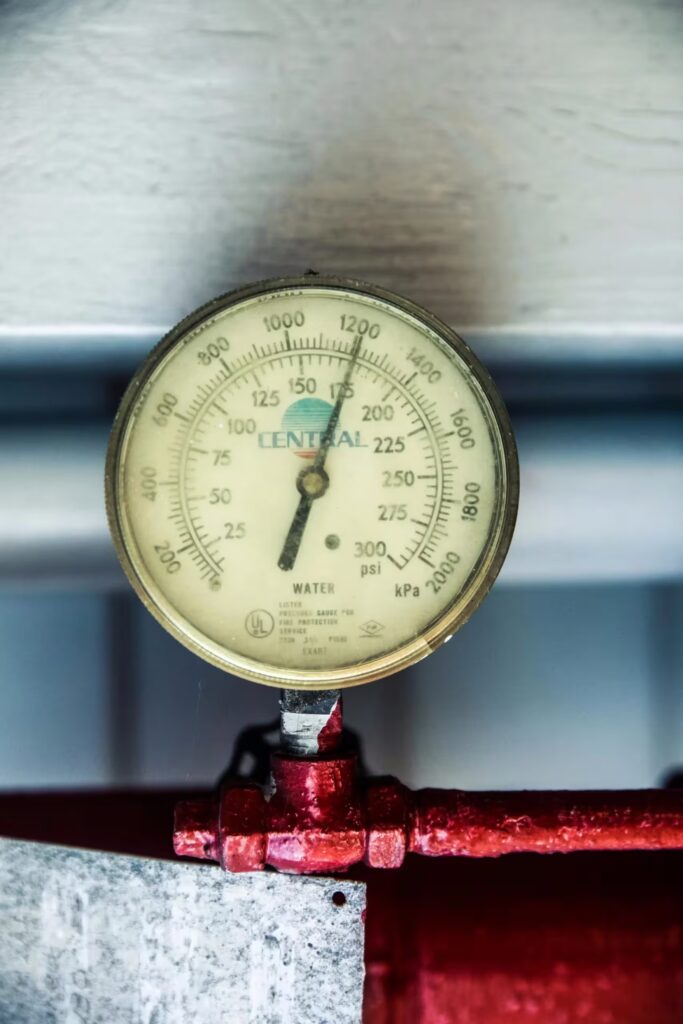Quick answer
To reduce the risk of burst pipes in freezing temperatures, which cause significant water and mould damage, homeowners should take several key preventative steps. These include insulating pipes and your home, maintaining a warm indoor temperature, knowing the exact location of your stopcock for quick shut-off, and fixing any leaking taps. If a pipe does burst, immediately shut off your water supply at the stopcock and turn off electricity. Document the damage, and promptly contact a professional flood damage clean-up service to mitigate water damage and prevent secondary issues like mould growth.
The dangers of sub-zero temperatures on UK property
As winter approaches, the freezing temperatures are sure to follow and subsequently the risk of frozen and burst pipes. Approximately 2,650 properties experience burst pipes each year, with the majority coming in the months of January and February. As the water inside of you plumbing freezes it expands in size. The pressure from the expanding ice is what causes your pipes to burst.
The aim of this blog is to provide you with the information and insight you need to prevent that happening and to stop your house from becoming a flood statistic. By protecting your pipes from the freezing winter temperatures, you will be saving yourself the time, money and stress it would take to get the damage repaired. Also, if you are reading this because you suspect you do have a leak it is important to take decisive action and hire a leak detection specialist.
What are the dangers of a burst pipe?
Once the pipe has burst the danger then comes when the frozen water melts, again the extent to which the pipe is damaged will directly affect the amount of water that is able to escape. However, any escape of water can have potentially catastrophic repercussions for your home and family. A burst pipe can lead to severe water damage to your property, which could also lead to structural issues if the situation worsens. In the event this occurs it is vital that you quickly look to hire a flood damage clean-up service provider like Ideal Response.
The extent to the damage can vary depending on a few factors:
- How long the water/ escape of water damage goes undiscovered
- The area in which the burst occurs
- Aging infrastructure
- How long you wait to treat the water damage
Am I at risk of mould?
In short, yes. The burst pipe and escape of water will lead to damp patches in your property. These damp patches provide the perfect environment for fungal growth. Surface mould can begin to grow in less than 24-48 hours. But the mould spores and fungal hyphae are not visible and can cause significant health complications. We strongly recommend you seek the help of a professional mould removal service provider like Ideal Response as soon as you notice signs of mould growth.
Not all signs of mould growth are visible, you may still be experiencing the health effects even if it isn’t visible. If this is the case, a professional survey would provide you with accurate information on mould counts. The invisible signs of mould are:
- Headaches
- Skin irritation or rashes
- Respiratory issues
- Asthma attacks
How to prevent your water pipes bursting this winter in the UK
There are a few steps that you can take to help prevent your water pipes and water tank from bursting this winter:
- Insulate – Insulating your home and pipes will help to protect them from freezing temperatures. It will also help you keep your home warmer with less need to spend money on heating.
- Keep your home as warm as possible – Maintaining warm conditions inside of your property will do a great deal to prevent your pipes from bursting due to freezing temperatures.
- Locate the Stopcock – In the event that your pipes do burst it is vital that you know where your stopcock is. The stopcock will enable you to completely turn of the water at the source and prevent a constant escape of water from the burst pipes.
- Fix any leaking taps – Leaking taps allow a constant (very slow) flow of water. If this freezes it can not only lead to your pipes bursting but also to them backing up.
- Hire a plumber before winter to check your plumbing and identify any signs of damage or weakness. It will cost significant less to pay for new pipes than it will be to deal with the effects of them bursting.
What to do if your water pipes burst
In the unfortunate event that your pipes do burst this winter, due to freezing temperatures or sheer bad luck, it is important that you know the best steps to take. If your pipes have burst, it is safe to assume that you are experiencing flood or water damage. The most important thing now is to mitigate further damage and prevent secondary damage from occurring. Focusing on this will help you save money on costly repairs and will reduce the amount of time it takes to get your property back to its pre water damage condition.
- The first step you should take is to shut off water into the property to prevent more water from escaping the damaged pipes.
- Shut off electricity to mitigate the risk of an electrical hazard occurring.
- Document the damage for insurance and damage restoration purposes.
- Contact Ideal Response and schedule a flood damage clean-up service to prevent secondary damage occurring.
Are you at risk of your pipes bursting?
For all properties, there is the risk of the freezing winter temperatures causing damage to your water pipes. However, the homes most likely to be affected by freezing conditions are older properties. Older properties are more likely to have older pipes and outdated insulation. Insulation will help your property retain heat and for many older properties the insulation used is not as effective as it could potentially be.
What next?
Take the necessary precautions and recommendations that will help protect your home and family this winter. If a burst pipe is affecting your property, it’s essential to act quickly. Contact the Ideal Response team today.
Burst pipes caused by freezing temperatures: Frequently asked questions
How can I prevent my pipes from bursting in freezing temperatures?
To prevent pipes from bursting in freezing temperatures, you should insulate vulnerable pipes (especially in unheated areas like lofts and garages), keep your home warm by maintaining a low constant temperature (e.g., 10-15°C) even when away, locate and know how to turn off your stopcock, and fix any leaking taps. Consider having a plumber inspect your plumbing system before winter.
What causes pipes to burst in cold weather?
Pipes burst in cold weather primarily because water expands as it freezes. When temperatures drop below zero, water inside uninsulated or exposed pipes turns to ice, increasing pressure within the pipe. This immense pressure can cause the pipe to crack or split, leading to a burst once the ice thaws and water can escape.
What should I do immediately if a pipe bursts in my house?
If a pipe bursts in your house, immediately shut off your main water supply using your stopcock to stop the flow of water. Next, turn off your electricity at the mains to prevent electrical hazards. Document the damage with photos for insurance purposes, and then promptly contact a professional flood damage clean-up service to mitigate water damage and prevent secondary issues like mould.
Which pipes are most at risk of bursting in winter?
Pipes most at risk of bursting in winter are those located in unheated areas of your home, such as lofts, basements, garages, and pipes running along or through external walls. Outdoor taps and pipes in outbuildings are also particularly vulnerable due to direct exposure to freezing temperatures and insufficient insulation.
Does pipe insulation prevent pipes from freezing and bursting?
Yes, pipe insulation (lagging) significantly reduces the risk of pipes freezing and bursting. It works by trapping heat around the pipe, keeping the water inside above freezing point. While not fool proof in extreme cold or if poorly installed, insulating pipes, especially in cold areas, is a highly effective preventative measure against winter pipe damage.
What are the consequences of a burst pipe, besides water damage?
Besides immediate water damage, the consequences of a burst pipe include structural damage to your property (e.g., weakened foundations, rotting timber), extensive mould growth due to persistent dampness (which can appear within 24-48 hours and cause serious respiratory and health issues), and significant financial costs for repairs and restoration.
How can keeping my home warm prevent pipes from bursting?
Keeping your home warm, even at a low constant temperature (e.g., 5-10°C), helps prevent pipes from bursting by circulating warm air throughout the property. This prevents the temperature around your internal pipes, especially those in cupboards, lofts, or near external walls, from dropping to freezing point, thus stopping the water inside from turning to ice and expanding.

Dave Knight - Leak Detection Technical Manager
With over 26 years' experience in property damage restoration, our Leak Detection Technical Manager is a seasoned expert. He brings a specialised focus of 21 years in leak detection and trace & access claims, including 10 years as the owner of a specialist leak detection company. He uses advanced, non-invasive technology to find leaks with minimal disruption in both domestic and commercial settings. His extensive water leak detection qualifications, including WRAS and BDMA, and his experience leading projects across the UK and Europe, highlight his expertise.





















